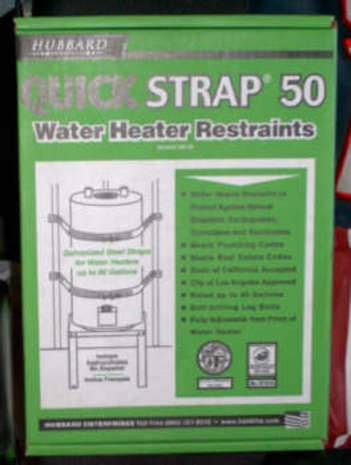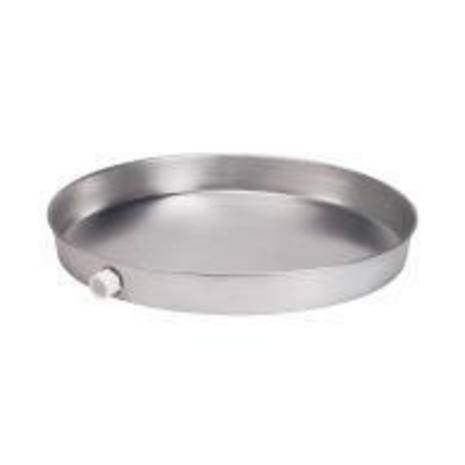So you’ve got the old tank out and it’s time to put in a new one. If you need help taking out the old one, see the first part of this guide. The fact of the matter is, if you can remove an old electric water heater, you can replace one without a step-by-step. But to help you along, I’ve got a list of tips to make the job as easy as fixing a toilet. Here is a picture of the lines running to the water heater to get you started:

You’ll need the same tools to install a water heater as you did to remove the old one. For supplies, you’ll need new copper or steel flex water heater supply lines, water heater straps, a new water heater pan unless it’s in an unfinished basement, and Teflon tape. A drill for straps would be helpful, though I’ve heard of people screwing them into the walls studs with their bare hands. I think this way is much more difficult, however.
Tips to remember:
1. Keep any pertinent electrical breakers off while doing any of this. You will shock yourself otherwise, and this will hurt.
2. Make sure the new supply lines are long enough to reach the pipes sticking out of the wall.
3. The valve supplies cold water to the water heater, so hook it up to the side of the water heater that says “cold” or “c.” It makes a difference.
4. Make sure the rubber gaskets in the supply lines are in the nuts and pushed all the way up to the copper before tightening them onto pipes. Otherwise there will be a leak.
 5. Put the pan under the water heater before filling it. Seems silly to mention, but I’ve seen it done otherwise many times before.
5. Put the pan under the water heater before filling it. Seems silly to mention, but I’ve seen it done otherwise many times before.
6. As you fill the new water heater, leave the hot side of a faucet open. This will keep pressure from building up inside since air will be able to escape as water flows in.
7. If you have a leak, don’t panic. You may just need to crank the leaky part a little more. If it’s really tight and there’s still a leak, especially in the supply lines, drain the water heater down and loosen and then re-tighten everything. Check the rubber gaskets. If all else fails, call a plumber. He or she won’t charge you nearly as much as if doing the job from start to finish, especially if there’s no old water heater to lug down the stairs.
8. If you’ve got a gas water heater, it’s definitely worth calling in a professional to hook up the gas.
One last thing. There’s still the question of the pressure release valve line. This is technically a drain, even though it will likely never see water unless your tank is about to explode from a buildup of pressure. I have never heard of this happening. As in the picture above, a copper flex line that does not have a downhill grade isn’t the best solution. If you have soldering skills and the existing pipe is copper, go for it. If it’s cpvc, all it takes is a saw and glue to make it work. The point is, unless the tank’s in the basement, this needs to be hooked up. There’s no shame in calling a pro for this. At least you can stand by your installation and prove that not all homeowners are helpless. With this guide and a little effort, you’d be very far from it. And the sooner you get the water heater in, the sooner you can play with the great box it comes in.
